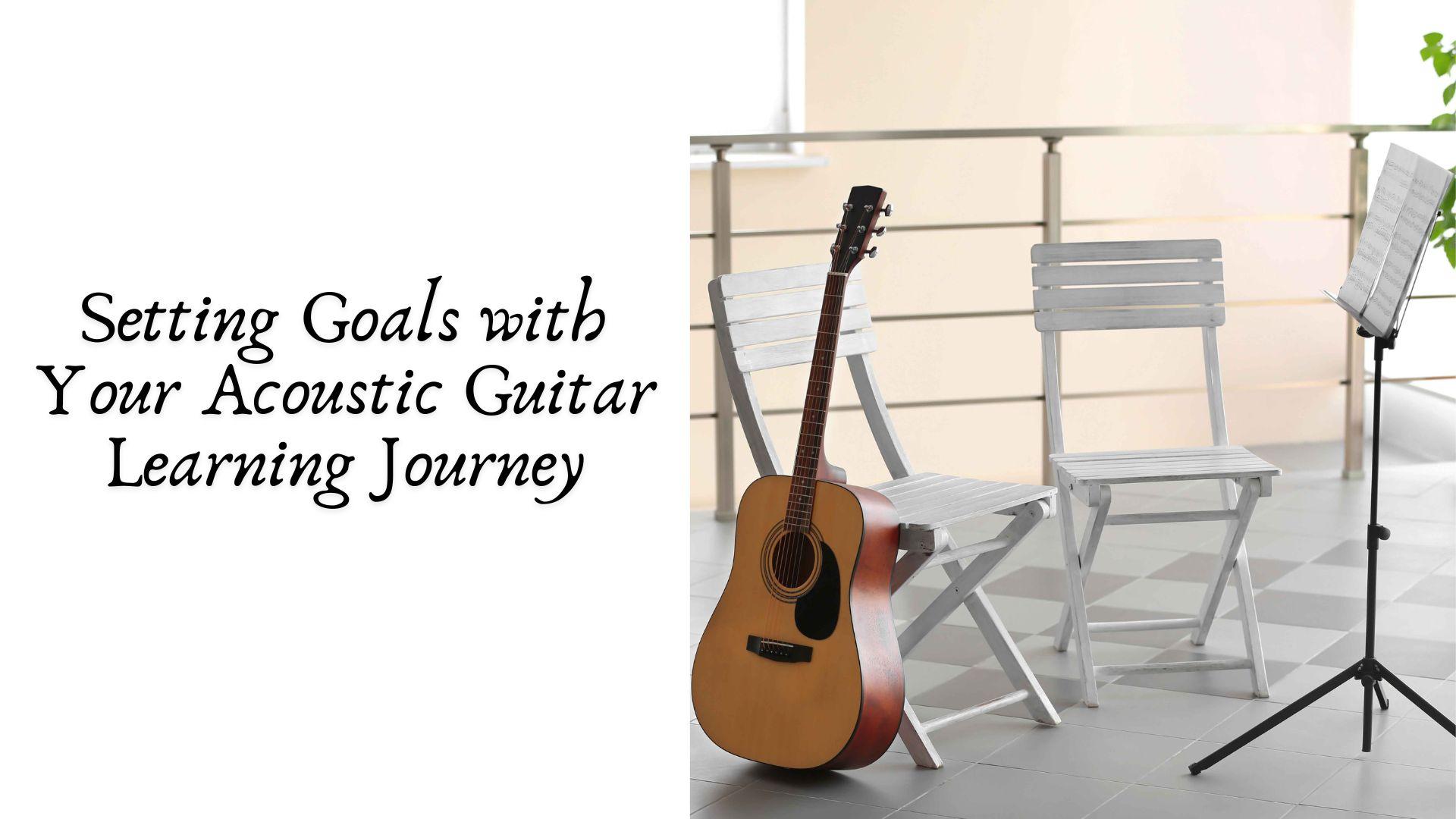Setting Goals with Your Acoustic Guitar Learning Journey

Learning to play the acoustic guitar is more than just memorizing chords or strumming along with your favorite songs—it’s a transformative journey that requires focus, patience, and, most importantly, clear goals. Whether you’re just beginning or have been playing for a while, setting goals can dramatically enhance your progress, boost your motivation, and make your learning experience more enjoyable and rewarding.
In this article, we’ll explore how to set effective goals for your acoustic guitar learning journey, provide strategies for tracking progress, and offer practical tips to stay committed over time.
Why Goal-Setting Matters in Guitar Learning
Many guitar learners struggle not because of a lack of talent but due to a lack of direction. Here’s how goal-setting helps:
-
Provides a Clear Roadmap: Goals give your practice sessions a purpose.
-
Boosts Motivation: Achieving milestones, big or small, builds confidence.
-
Improves Focus: With goals, you avoid aimless playing and target specific skills.
-
Tracks Progress: You can reflect on where you started and how far you’ve come.
Step-by-Step Guide to Setting Guitar Goals
Define Your “Why”
Start by asking yourself why you want to learn the acoustic guitar. Is it to play your favorite songs, perform on stage, write original music, or simply unwind after work? Understanding your deeper motivation helps guide your goals and keeps you inspired during tough phases.
Set SMART Goals
Use the SMART framework to make your guitar goals more achievable:
-
Specific: Instead of “get better at guitar,” say “learn to play the intro of ‘Blackbird’ by The Beatles.”
-
Measurable: Track your progress with tools like video recordings or practice journals.
-
Achievable: Set realistic goals based on your current level.
-
Relevant: Align goals with your interests and musical tastes.
-
Time-bound: Give yourself a deadline like “master barre chords in 6 weeks.”
Break Down Big Goals into Milestones
A long-term goal like “play live at an open mic” can feel overwhelming. Break it down:
-
Learn 10 complete songs.
-
Practice performing in front of friends.
-
Record yourself and review your performance.
-
Build confidence with daily warmups and vocal/guitar coordination.
Each milestone becomes a mini-goal that leads to your larger dream.
Categorize Your Goals
You can organize your goals into different categories:
-
Technique: Improve fingerpicking, change chords faster, or clean up your strumming.
-
Repertoire: Learn specific songs or musical styles like blues, folk, or rock.
-
Theory: Understand scales, chord progressions, and songwriting basics.
-
Performance: Play in front of others, join a jam session, or upload videos online.
This approach ensures a well-rounded learning path.
Sample Goals Based on Experience Level
🟢 Beginner
-
Learn the basic open chords (G, C, D, A, E).
-
Strum through one complete song without stopping.
-
Practice chord transitions for 10 minutes daily.
-
Memorize 3 simple songs within one month.
🟡 Intermediate
-
Learn barre chords and incorporate them into songs.
-
Master 5 fingerpicking patterns.
-
Understand major and minor scales across the fretboard.
-
Record a video performance of a challenging piece.
🔵 Advanced
-
Compose your own original song using advanced techniques.
-
Master soloing over chord progressions in different keys.
-
Learn improvisation within a given scale.
-
Prepare a 30-minute setlist for a live performance.
Tools to Help Track and Maintain Your Progress
-
Practice Journal: Write down what you practiced, what improved, and what needs work.
-
Mobile Apps: Tools like Yousician, Fender Play, or Justin Guitar can help you monitor milestones.
-
Video Logs: Record yourself weekly to visually track progress.
-
Accountability Partners: Join online forums, guitar clubs, or take lessons to stay engaged.
Staying Motivated on the Journey
Goal-setting is just the beginning; sticking to your goals is the real challenge. Here’s how to stay motivated:
-
Celebrate Wins: Even small achievements deserve recognition.
-
Stay Flexible: If you hit a roadblock, adjust the timeline—not the goal.
-
Avoid Burnout: Schedule rest days and mix up your practice to keep it fun.
-
Learn What You Love: Incorporate songs and styles you’re passionate about.
Final Thoughts
Setting goals in your acoustic guitar journey transforms practice into purpose. Instead of wandering aimlessly through YouTube tutorials or random tabs, you’ll have a clear, motivating structure that leads you toward becoming the guitarist you envision. Whether you aim to strum around a campfire or perform on stage, every goal you set—and achieve—builds the bridge between you and your musical dreams.
- Art
- Causes
- Crafts
- Dance
- Drinks
- Film
- Fitness
- Food
- Jogos
- Gardening
- Health
- Início
- Literature
- Music
- Networking
- Outro
- Party
- Religion
- Shopping
- Sports
- Theater
- Wellness


